The first round of the MLB draft was pretty much chalk up top, with the first seven picks matching my mock draft. The first 10 selections were dominated by hitters. And the whole first round was dominated by college players and hitters, as it featured just two high school arms, the lowest number in memory.
Here are some thoughts from the first night:
 The Orioles picked first overall and took the No. 1 prospect in Adley Rutschman, a no-doubt catcher with plate discipline and power. He could be in the majors by the end of next year, depending on how quickly the Orioles want to move him up. Baltimore then picked first in the second round and landed prep shortstop Gunnar Henderson. No. 41 on my board, Henderson was however seen by many teams as worth a pick in the second half of the first round as a power-hitting infielder likely to move to third base but with questions about his bat speed.
The Orioles picked first overall and took the No. 1 prospect in Adley Rutschman, a no-doubt catcher with plate discipline and power. He could be in the majors by the end of next year, depending on how quickly the Orioles want to move him up. Baltimore then picked first in the second round and landed prep shortstop Gunnar Henderson. No. 41 on my board, Henderson was however seen by many teams as worth a pick in the second half of the first round as a power-hitting infielder likely to move to third base but with questions about his bat speed.
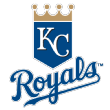 The Royals took a pair of shortstops, grabbing Bobby Witt Jr. with the second pick and Brady McConnell in the second round. Witt is a plus defender at short with a plus arm, while McConnell likely will move to another position.
The Royals took a pair of shortstops, grabbing Bobby Witt Jr. with the second pick and Brady McConnell in the second round. Witt is a plus defender at short with a plus arm, while McConnell likely will move to another position.
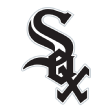 The White Sox took my No. 2 player, Cal first baseman Andrew Vaughn, with the third overall pick. He is the best pure bat in the class, with a plus hit tool, a ridiculously good eye and above-average power. In the second round, they took prep right-hander Matt Thompson, who had a miserable spring but in the past has been mid-90s with an above-average breaking ball -- and has a lot of projection left. I had him ranked much lower, having seen his velocity drop to 83 to 86 mph in the fourth inning when I saw him. But he was far better last summer, and the White Sox might be betting on a bounce-back performance.
The White Sox took my No. 2 player, Cal first baseman Andrew Vaughn, with the third overall pick. He is the best pure bat in the class, with a plus hit tool, a ridiculously good eye and above-average power. In the second round, they took prep right-hander Matt Thompson, who had a miserable spring but in the past has been mid-90s with an above-average breaking ball -- and has a lot of projection left. I had him ranked much lower, having seen his velocity drop to 83 to 86 mph in the fourth inning when I saw him. But he was far better last summer, and the White Sox might be betting on a bounce-back performance.
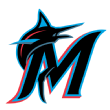 Miami took Vanderbilt outfielder J.J. Bleday, who has exceptional hand strength for all-fields power, even with a decent-sized hitch in his swing. The Marlins then took plus defensive shortstop Nasim Nunez with their second-round pick.
Miami took Vanderbilt outfielder J.J. Bleday, who has exceptional hand strength for all-fields power, even with a decent-sized hitch in his swing. The Marlins then took plus defensive shortstop Nasim Nunez with their second-round pick.
 Detroit grabbed Riley Greene, a high school outfielder who I know some scouts thought had the best offensive upside in the whole class, then backed it up with third baseman Nick Quintana, who can hit for contact rather than power and plays plus defense at third despite a total lack of foot speed.
Detroit grabbed Riley Greene, a high school outfielder who I know some scouts thought had the best offensive upside in the whole class, then backed it up with third baseman Nick Quintana, who can hit for contact rather than power and plays plus defense at third despite a total lack of foot speed.
 The Padres ended up with C.J. Abrams, who was the sixth guy of the six position players expected to go in the top half-dozen picks. He is an 80 runner who can handle shortstop but could always end up in center field. He also should hit for average, but he showed a little swing-and-miss this spring. Their second-rounder, Josh Mears, feels like a very Padres pick, with explosive bat speed and power in a corner outfielder package.
The Padres ended up with C.J. Abrams, who was the sixth guy of the six position players expected to go in the top half-dozen picks. He is an 80 runner who can handle shortstop but could always end up in center field. He also should hit for average, but he showed a little swing-and-miss this spring. Their second-rounder, Josh Mears, feels like a very Padres pick, with explosive bat speed and power in a corner outfielder package.
 The Reds seemed to be locked in on Nick Lodolo -- the top college lefty in the draft -- since February. He looks like he'll move fast in any role, getting ground balls with his fastball and missing bats with his slider. They went for broke with their second pick, taking Rece Hinds, a shortstop who will move to another position, has 80 power and swings and misses a ton for a high school hitter.
The Reds seemed to be locked in on Nick Lodolo -- the top college lefty in the draft -- since February. He looks like he'll move fast in any role, getting ground balls with his fastball and missing bats with his slider. They went for broke with their second pick, taking Rece Hinds, a shortstop who will move to another position, has 80 power and swings and misses a ton for a high school hitter.
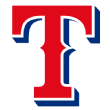 The first pick that didn't match my final mock matched my previous one: Texas took third baseman Josh Jung, rather than right-hander Alek Manoah. I absolutely would have taken Manoah there, both on pure talent and because I think the Rangers certainly could use the pitcher in their system, after the horrendous luck they've had with pitching prospects getting hurt. Also, I saw Manoah retire Jung four times, twice via strikeouts, so he obviously is the better prospect. The Rangers did grab a pitcher in UCLA right-hander Ryan Garcia in the second round. He has solid offspeed stuff with plus feel and command, but his fastball is a little light, and he hasn't held his stuff well into games. In between, they took big power bat Davis Wendzel, a third baseman from Baylor who has an 80 mullet.
The first pick that didn't match my final mock matched my previous one: Texas took third baseman Josh Jung, rather than right-hander Alek Manoah. I absolutely would have taken Manoah there, both on pure talent and because I think the Rangers certainly could use the pitcher in their system, after the horrendous luck they've had with pitching prospects getting hurt. Also, I saw Manoah retire Jung four times, twice via strikeouts, so he obviously is the better prospect. The Rangers did grab a pitcher in UCLA right-hander Ryan Garcia in the second round. He has solid offspeed stuff with plus feel and command, but his fastball is a little light, and he hasn't held his stuff well into games. In between, they took big power bat Davis Wendzel, a third baseman from Baylor who has an 80 mullet.
 Atlanta took a value guy at No. 9 in catcher Shea Langeliers. I thought the Braves would go for upside with Corbin Carroll, but Langeliers is a no-doubt catcher -- maybe a 70 defender there --whose production at Baylor might understate his potential with the bat, given his exit velocity. The Braves turned around and took another fairly safe player in Braden Shewmake, a shortstop from Texas A&M who will head to second or third, with a solid left-handed swing that should at least produce a lot of contact.
Atlanta took a value guy at No. 9 in catcher Shea Langeliers. I thought the Braves would go for upside with Corbin Carroll, but Langeliers is a no-doubt catcher -- maybe a 70 defender there --whose production at Baylor might understate his potential with the bat, given his exit velocity. The Braves turned around and took another fairly safe player in Braden Shewmake, a shortstop from Texas A&M who will head to second or third, with a solid left-handed swing that should at least produce a lot of contact.
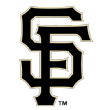 San Francisco went with a pair of solid college position-player prospects with its two Day 1 picks. The Giants grabbed Arizona State outfielder Hunter Bishop, who was leading Division I in homers early this spring but tapered off once conference play began, with the 10th overall pick. He's a left fielder in the long run and does have some swing-and-miss concerns, but he has some idea of the strike zone. Their second-round pick, Louisville first baseman Logan Wyatt, has an above-average hit tool that could end up plus but doesn't show the game power you want from the position. He looks like an ideal candidate for swing-optimization work to get to more power, as he has the size and strength to hit 20-plus homers, and already has the other skills you'd want in a middle-of-the-order bat.
San Francisco went with a pair of solid college position-player prospects with its two Day 1 picks. The Giants grabbed Arizona State outfielder Hunter Bishop, who was leading Division I in homers early this spring but tapered off once conference play began, with the 10th overall pick. He's a left fielder in the long run and does have some swing-and-miss concerns, but he has some idea of the strike zone. Their second-round pick, Louisville first baseman Logan Wyatt, has an above-average hit tool that could end up plus but doesn't show the game power you want from the position. He looks like an ideal candidate for swing-optimization work to get to more power, as he has the size and strength to hit 20-plus homers, and already has the other skills you'd want in a middle-of-the-order bat.
 The Blue Jays benefited from those picks by landing Manoah, whom I had as the best pitcher in the entire draft class. He is a four-pitch right-hander who attacks hitters in the zone and throws a ton of strikes. That's easily one of my favorite picks of the night. They also took a projection right-hander in Kendall Williams in the second round. Williams is 6-foot-6 with velocity and good breaking stuff and in need of some delivery help, but he is a great complement to the advanced college arm in Manoah.
The Blue Jays benefited from those picks by landing Manoah, whom I had as the best pitcher in the entire draft class. He is a four-pitch right-hander who attacks hitters in the zone and throws a ton of strikes. That's easily one of my favorite picks of the night. They also took a projection right-hander in Kendall Williams in the second round. Williams is 6-foot-6 with velocity and good breaking stuff and in need of some delivery help, but he is a great complement to the advanced college arm in Manoah.
 The Mets yielded the first surprise of the night, at least to me, when they went for high school hitter Brett Baty, whose age (19½) seemed to dominate any discussion of his stock this spring. It is a legitimate variable to consider, because older high school hitters have a somewhat worse outlook -- they're older than the pitchers they're facing, so scouts do not get to see them against competition their own age -- but should never be seen as a reason to "kill" a prospect in the draft. Baty also has a great swing and plus power, and the lack of projection from his age isn't a problem because he already is on the strong side. The Mets stayed high school with projection right-hander Josh Wolf in the second round.
The Mets yielded the first surprise of the night, at least to me, when they went for high school hitter Brett Baty, whose age (19½) seemed to dominate any discussion of his stock this spring. It is a legitimate variable to consider, because older high school hitters have a somewhat worse outlook -- they're older than the pitchers they're facing, so scouts do not get to see them against competition their own age -- but should never be seen as a reason to "kill" a prospect in the draft. Baty also has a great swing and plus power, and the lack of projection from his age isn't a problem because he already is on the strong side. The Mets stayed high school with projection right-hander Josh Wolf in the second round.
 Keoni Cavaco feels like a slight reach for me at No. 13, where the Twins took him, but the industry had him in that range; he was in various mixes all the way down from 15 onward. His body changed substantially for the better this winter, and he has an intriguing power/speed combination, with some teams less confident in his hit tool. The Twins definitely wanted power, though, going for Southern Miss outfielder Matt Wallner with their second pick. Wallner has power, hit better as the season went on and could always move to the mound if he doesn't work out at the plate, as he was 94 to 98 mph with a plus slider before he stopped pitching. They took Rice right-hander Matt Canterino in the second round; he has a potentially plus breaking ball but a very rough delivery that will make it hard for him to stay a starter.
Keoni Cavaco feels like a slight reach for me at No. 13, where the Twins took him, but the industry had him in that range; he was in various mixes all the way down from 15 onward. His body changed substantially for the better this winter, and he has an intriguing power/speed combination, with some teams less confident in his hit tool. The Twins definitely wanted power, though, going for Southern Miss outfielder Matt Wallner with their second pick. Wallner has power, hit better as the season went on and could always move to the mound if he doesn't work out at the plate, as he was 94 to 98 mph with a plus slider before he stopped pitching. They took Rice right-hander Matt Canterino in the second round; he has a potentially plus breaking ball but a very rough delivery that will make it hard for him to stay a starter.
 The Phillies took my 13th-ranked player, Bryson Stott, at No. 14, so that's right in his range. He is a no-doubt shortstop with power but some swing-and-miss potential -- so, good value at that spot. That was their only pick on Day 1.
The Phillies took my 13th-ranked player, Bryson Stott, at No. 14, so that's right in his range. He is a no-doubt shortstop with power but some swing-and-miss potential -- so, good value at that spot. That was their only pick on Day 1.
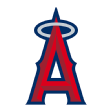 I had the Angels linked to various high-ceiling high school athletes at pick 15, but they went for a safer player in North Carolina shortstop Will Wilson, probably a second baseman in the long run but with the power to profile there. They then took their athlete in fleet-footed shortstop Kyren Paris, who is very young and has a lot of physical growth ahead of him, with a swing scouts really like for future contact.
I had the Angels linked to various high-ceiling high school athletes at pick 15, but they went for a safer player in North Carolina shortstop Will Wilson, probably a second baseman in the long run but with the power to profile there. They then took their athlete in fleet-footed shortstop Kyren Paris, who is very young and has a lot of physical growth ahead of him, with a swing scouts really like for future contact.
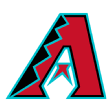 The Diamondbacks got the best value of the first round when they landed my No. 4 player, Seattle prep outfielder Corbin Carroll, with the 16th pick. The only knock I could ever get anyone to offer on Carroll was his height; he is maybe 5-foot-10, but if he had been 6-foot-2, he would have been in consideration at No. 1. The D-backs did something similar last year, when they selected in the second round Alek Thomas -- whom I had ranked as a first-round talent -- only to have Thomas rake in pro ball. I imagine they're thinking they did something similar here, as Thomas also is sub-6 feet and played at a cold-weather high school. They followed that with five straight pitchers -- two prep kids and three college guys, all with varying chances to start, led by prep right-hander Brennan Malone from IMG Academy. Malone probably has the highest upside and also is the best known of the group. Their last pick of the day was Arkansas outfielder Dom Fletcher, who has an unorthodox swing but has shown surprising power and has great instincts in center field.
The Diamondbacks got the best value of the first round when they landed my No. 4 player, Seattle prep outfielder Corbin Carroll, with the 16th pick. The only knock I could ever get anyone to offer on Carroll was his height; he is maybe 5-foot-10, but if he had been 6-foot-2, he would have been in consideration at No. 1. The D-backs did something similar last year, when they selected in the second round Alek Thomas -- whom I had ranked as a first-round talent -- only to have Thomas rake in pro ball. I imagine they're thinking they did something similar here, as Thomas also is sub-6 feet and played at a cold-weather high school. They followed that with five straight pitchers -- two prep kids and three college guys, all with varying chances to start, led by prep right-hander Brennan Malone from IMG Academy. Malone probably has the highest upside and also is the best known of the group. Their last pick of the day was Arkansas outfielder Dom Fletcher, who has an unorthodox swing but has shown surprising power and has great instincts in center field.
&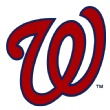 The Nationals had to be thrilled when Jackson Rutledge slid to their No. 17 pick after everyone thought he would go somewhere in the 9-to-11 range. (But it did ruin my streak of predicting their picks accurately.) I had one front-office source with another team say Rutledge had the best fastball/slider combo in the class. That was Washington's only pick on Day 1.
The Nationals had to be thrilled when Jackson Rutledge slid to their No. 17 pick after everyone thought he would go somewhere in the 9-to-11 range. (But it did ruin my streak of predicting their picks accurately.) I had one front-office source with another team say Rutledge had the best fastball/slider combo in the class. That was Washington's only pick on Day 1.
 The Pirates grabbed two favorites of mine in right-hander Quinn Priester at pick 18 and outfielder Sammy Siani in the comp round. Siani might have been a first-rounder had he faced better competition this spring, while Priester's delivery was one of the best I saw this spring.
The Pirates grabbed two favorites of mine in right-hander Quinn Priester at pick 18 and outfielder Sammy Siani in the comp round. Siani might have been a first-rounder had he faced better competition this spring, while Priester's delivery was one of the best I saw this spring.
 The Cardinals took Kentucky lefty Zack Thompson, who had top-10 stuff but slid a little into the teens because teams were concerned about the time he missed in 2018 with a forearm injury. It's a smart risk for the spot, because that's the kind of upside the Cardinals rarely get drafting late in the first round. Their second pick, Tre Fletcher, is a raw prep outfielder from Maine who reclassified into this year's draft and is seen as a tough sign due to his Vanderbilt commitment. He is a plus runner with power, but the hit tool appears to be very far behind.
The Cardinals took Kentucky lefty Zack Thompson, who had top-10 stuff but slid a little into the teens because teams were concerned about the time he missed in 2018 with a forearm injury. It's a smart risk for the spot, because that's the kind of upside the Cardinals rarely get drafting late in the first round. Their second pick, Tre Fletcher, is a raw prep outfielder from Maine who reclassified into this year's draft and is seen as a tough sign due to his Vanderbilt commitment. He is a plus runner with power, but the hit tool appears to be very far behind.
 The Mariners crushed some college pitching, taking Elon's George Kirby at 20. He had a historic strikeout/walk ratio this spring, showing a potentially plus curveball and a fastball up to 95 to 96 mph, a mid-rotation upside on stuff that could skew higher with his command. Comp Round B pick Isaiah Campbell is a great value play, another strike thrower with an above-average fastball/slurve combo who slipped a little because he missed 2017 due to elbow surgery. In between, they took large TCU lefty Brandon Williamson, who also has that potentially above-average fastball/breaking ball combination but lacks the command of Seattle's other two picks.
The Mariners crushed some college pitching, taking Elon's George Kirby at 20. He had a historic strikeout/walk ratio this spring, showing a potentially plus curveball and a fastball up to 95 to 96 mph, a mid-rotation upside on stuff that could skew higher with his command. Comp Round B pick Isaiah Campbell is a great value play, another strike thrower with an above-average fastball/slurve combo who slipped a little because he missed 2017 due to elbow surgery. In between, they took large TCU lefty Brandon Williamson, who also has that potentially above-average fastball/breaking ball combination but lacks the command of Seattle's other two picks.
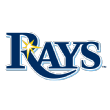 The Rays picked four times and were sort of all over the place, at least in that there's nothing tying all these kids together. Their first pick was UNC Wilmington shortstop Greg Jones, an 80 runner and one of the fastest players I've ever seen. He is a bad defender at short and a switch-hitter without power or much consistency to his swing. I think he will end up in center field, and there are a lot of similarities to Billy Hamilton. J.J. Goss, their first pick in the Comp Round A, was my No. 2 prep pitcher in this class, a tall right-hander with a three-pitch mix, a good delivery and an aggressive style with at least average control. Seth Johnson is a converted position player who threw all of five innings before this year and hit 98 regularly with a good delivery but doesn't have much in the way of secondary stuff or present command -- perhaps unsurprising given his history. John Doxakis, Tampa's second-round pick, has plus command, can miss bats with his slider and has a viable changeup, but his fastball shows a lot of upper 80s, and he might not have the delivery to start. That's still a good bundle of value, even if I had those players ranked differently than the Rays did.
The Rays picked four times and were sort of all over the place, at least in that there's nothing tying all these kids together. Their first pick was UNC Wilmington shortstop Greg Jones, an 80 runner and one of the fastest players I've ever seen. He is a bad defender at short and a switch-hitter without power or much consistency to his swing. I think he will end up in center field, and there are a lot of similarities to Billy Hamilton. J.J. Goss, their first pick in the Comp Round A, was my No. 2 prep pitcher in this class, a tall right-hander with a three-pitch mix, a good delivery and an aggressive style with at least average control. Seth Johnson is a converted position player who threw all of five innings before this year and hit 98 regularly with a good delivery but doesn't have much in the way of secondary stuff or present command -- perhaps unsurprising given his history. John Doxakis, Tampa's second-round pick, has plus command, can miss bats with his slider and has a viable changeup, but his fastball shows a lot of upper 80s, and he might not have the delivery to start. That's still a good bundle of value, even if I had those players ranked differently than the Rays did.
 The Rockies took Michael Toglia in the first round. He is a great defensive first baseman with some power who also comes with questions about his plate discipline and how much he'll hit. He also could move to the outfield. Their second-rounder, Aaron Schunk, showed off some power in the regional for Georgia, with a good swing, great arm strength and a chance to stay at third base, although he might be a low OBP guy. Colorado took Michigan right-hander Karl Kauffmann, who has too many letters in his name, with its Comp Round B pick. He works in the low 90s with good sink and a slider that projects to above average, with some reliever risk but enough to go out as a starter.
The Rockies took Michael Toglia in the first round. He is a great defensive first baseman with some power who also comes with questions about his plate discipline and how much he'll hit. He also could move to the outfield. Their second-rounder, Aaron Schunk, showed off some power in the regional for Georgia, with a good swing, great arm strength and a chance to stay at third base, although he might be a low OBP guy. Colorado took Michigan right-hander Karl Kauffmann, who has too many letters in his name, with its Comp Round B pick. He works in the low 90s with good sink and a slider that projects to above average, with some reliever risk but enough to go out as a starter.
 The Indians made one of the most puzzling picks of the day when they took Georgia prep right-hander Daniel Espino in the first round. I had multiple teams tell me they had taken Espino off their board on some concerns they had about his arm, and it seemed likely he would fall out of the first round. But Cleveland appears unperturbed, much like they were when they took Ethan Hankins in the first round last year after injury concerns knocked him out of the top half of the round. They selected elite defensive shortstop Yordis Valdes in the second round, the right spot for him, given his defensive prowess and how far he has to go with the bat.
The Indians made one of the most puzzling picks of the day when they took Georgia prep right-hander Daniel Espino in the first round. I had multiple teams tell me they had taken Espino off their board on some concerns they had about his arm, and it seemed likely he would fall out of the first round. But Cleveland appears unperturbed, much like they were when they took Ethan Hankins in the first round last year after injury concerns knocked him out of the top half of the round. They selected elite defensive shortstop Yordis Valdes in the second round, the right spot for him, given his defensive prowess and how far he has to go with the bat.
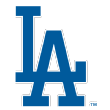 The Dodgers had an extra first-round pick because they didn't sign their pick last year. They led off with Tulane slugger Kody Hoese, a fourth-year junior who was among the leaders in homers in Division I this year. A late bloomer, Hoese always has shown the ability to make contact, and he might stay at third base. North Carolina first baseman Michael Busch has a great swing and a history of getting on base with big power; I'm surprised he has never hit for a higher average, given his eye and how well his hands work. The Dodgers went for some upside with prep right-hander Jimmy Lewis, a teammate of first-rounder Brett Baty. Lewis is projectable and athletic, throws 91 to 95 mph with feel for a curveball already and is a perfect projection high school kid, if you want to fish in that end of the lake.
The Dodgers had an extra first-round pick because they didn't sign their pick last year. They led off with Tulane slugger Kody Hoese, a fourth-year junior who was among the leaders in homers in Division I this year. A late bloomer, Hoese always has shown the ability to make contact, and he might stay at third base. North Carolina first baseman Michael Busch has a great swing and a history of getting on base with big power; I'm surprised he has never hit for a higher average, given his eye and how well his hands work. The Dodgers went for some upside with prep right-hander Jimmy Lewis, a teammate of first-rounder Brett Baty. Lewis is projectable and athletic, throws 91 to 95 mph with feel for a curveball already and is a perfect projection high school kid, if you want to fish in that end of the lake.
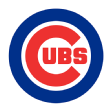 The Cubs took the hardest-throwing starter in the draft with 6-foot right-hander Ryan Jensen, who will hit 100 mph and frequently sits 97 to 99 mph, with an average slider and solid control. Everyone wants to stick him in the bullpen because he is short and throws hard, but he has the ability to hold that velocity deep into games as a starter. Chase Strumpf could have been a first-rounder had he performed better this year for UCLA. He is a shortstop who will move to second base. And he did have a first-round kind of spring in 2018 as a sophomore, hitting for average and power with a slightly better contact rate.
The Cubs took the hardest-throwing starter in the draft with 6-foot right-hander Ryan Jensen, who will hit 100 mph and frequently sits 97 to 99 mph, with an average slider and solid control. Everyone wants to stick him in the bullpen because he is short and throws hard, but he has the ability to hold that velocity deep into games as a starter. Chase Strumpf could have been a first-rounder had he performed better this year for UCLA. He is a shortstop who will move to second base. And he did have a first-round kind of spring in 2018 as a sophomore, hitting for average and power with a slightly better contact rate.
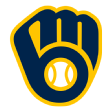 The Brewers had an interesting day one, certainly, reaching a little bit for Mississippi State lefty Ethan Small in the first round. Small is a redshirt junior who missed 2017 after Tommy John surgery, and struck out 44 percent of the batters he faced as a starter this year for the Bulldogs even though his velocity hasn't come all the way back post-surgery. Their second pick, junior college lefty Antoine Kelly, sits in the mid-90s with an unrefined delivery but a lot of athleticism and a projectable 6'6" frame. Teams had concerns about his makeup, however, and it seemed like it would push him well into day two.
The Brewers had an interesting day one, certainly, reaching a little bit for Mississippi State lefty Ethan Small in the first round. Small is a redshirt junior who missed 2017 after Tommy John surgery, and struck out 44 percent of the batters he faced as a starter this year for the Bulldogs even though his velocity hasn't come all the way back post-surgery. Their second pick, junior college lefty Antoine Kelly, sits in the mid-90s with an unrefined delivery but a lot of athleticism and a projectable 6'6" frame. Teams had concerns about his makeup, however, and it seemed like it would push him well into day two.
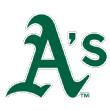 Oakland started off with Clemson shortstop Logan Davidson, who I think came out of spring 2018 as someone teams figured would be a top 10 pick as a solid to above-average defensive shortstop with power but a little swing and miss. He had a rough 12 months since then, with an awful showing in the Cape Cod League and zero improvement this spring; he never hit .300 in any of his three years with the Tigers and still swings and misses more than you'd like for his profile. It's good value given how the industry viewed him a year ago. They stayed in the ACC for their second pick, UNC right-hander Tyler Baum, who has been up to 97 and throws a lot of strikes but has had trouble holding velocity deep into games as a starter.
Oakland started off with Clemson shortstop Logan Davidson, who I think came out of spring 2018 as someone teams figured would be a top 10 pick as a solid to above-average defensive shortstop with power but a little swing and miss. He had a rough 12 months since then, with an awful showing in the Cape Cod League and zero improvement this spring; he never hit .300 in any of his three years with the Tigers and still swings and misses more than you'd like for his profile. It's good value given how the industry viewed him a year ago. They stayed in the ACC for their second pick, UNC right-hander Tyler Baum, who has been up to 97 and throws a lot of strikes but has had trouble holding velocity deep into games as a starter.
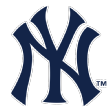 The Yankees almost had my lowest-ranked pick of the first round, taking prep shortstop Anthony Volpe at pick 30. There are scouts who love his instincts on both sides of the ball, and he is a very polished high school player, but there's no plus tool here, maybe not an above-average one depending on how you rate his pure hitting skill. Their second pick (in Comp Round A), Missouri lefty TJ Sikkema, was a sort of sleeper pick, assuming a major college arm could still be undervalued; he's a three-pitch guy, up to 96, with tremendous feel to pitch, a clear starter whose command and approach may give him more upside than most college arms. Their second-rounder, LSU second baseman Josh Smith, was off some boards due to a major back injury that cost him almost all of 2018; he's got some juice and an average hit tool, but like Volpe, there's nothing plus here. He reminds me a little of second baseman Nick Solak, whom the Yankees took in the second round in 2016 and later traded to Tampa Bay.
The Yankees almost had my lowest-ranked pick of the first round, taking prep shortstop Anthony Volpe at pick 30. There are scouts who love his instincts on both sides of the ball, and he is a very polished high school player, but there's no plus tool here, maybe not an above-average one depending on how you rate his pure hitting skill. Their second pick (in Comp Round A), Missouri lefty TJ Sikkema, was a sort of sleeper pick, assuming a major college arm could still be undervalued; he's a three-pitch guy, up to 96, with tremendous feel to pitch, a clear starter whose command and approach may give him more upside than most college arms. Their second-rounder, LSU second baseman Josh Smith, was off some boards due to a major back injury that cost him almost all of 2018; he's got some juice and an average hit tool, but like Volpe, there's nothing plus here. He reminds me a little of second baseman Nick Solak, whom the Yankees took in the second round in 2016 and later traded to Tampa Bay.
 The big shocker of the night was Houston, at No. 32, going off the top 100 entirely with Korey Lee, the catcher from Cal who also didn't appear on MLB's top 100. Lee wasn't seen as any kind of prospect coming into this year off a .238/.328/.426 sophomore season, although he had a strong summer in the wood-bat Northwoods League last year and exploded this year to hit .339/.415/.613 with 13 homers. But he isn't a Day 1 talent, with a plus arm and plus power but below-average receiving skills and a below-average hit tool.
The big shocker of the night was Houston, at No. 32, going off the top 100 entirely with Korey Lee, the catcher from Cal who also didn't appear on MLB's top 100. Lee wasn't seen as any kind of prospect coming into this year off a .238/.328/.426 sophomore season, although he had a strong summer in the wood-bat Northwoods League last year and exploded this year to hit .339/.415/.613 with 13 homers. But he isn't a Day 1 talent, with a plus arm and plus power but below-average receiving skills and a below-average hit tool.
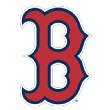 The Red Sox were the only team without a first-round pick this year, with their top pick bumped down 10 spots to No. 43 because they exceeded the luxury tax threshold. They started their draft with Cam Cannon, a shortstop from the University of Arizona who has to move to another position, likely second base, but has great bat-to-ball skill and at least good doubles power. They went for more upside with their second-round pick, Puerto Rican shortstop Matthew Lugo, who just turned 18 a few weeks ago. I think the consensus is that he's likely to move to third base in the long run, but he's here for his swing, which he repeats well and produces hard line-drive contact that I think will produce above-average power when his body fills out.
The Red Sox were the only team without a first-round pick this year, with their top pick bumped down 10 spots to No. 43 because they exceeded the luxury tax threshold. They started their draft with Cam Cannon, a shortstop from the University of Arizona who has to move to another position, likely second base, but has great bat-to-ball skill and at least good doubles power. They went for more upside with their second-round pick, Puerto Rican shortstop Matthew Lugo, who just turned 18 a few weeks ago. I think the consensus is that he's likely to move to third base in the long run, but he's here for his swing, which he repeats well and produces hard line-drive contact that I think will produce above-average power when his body fills out.
